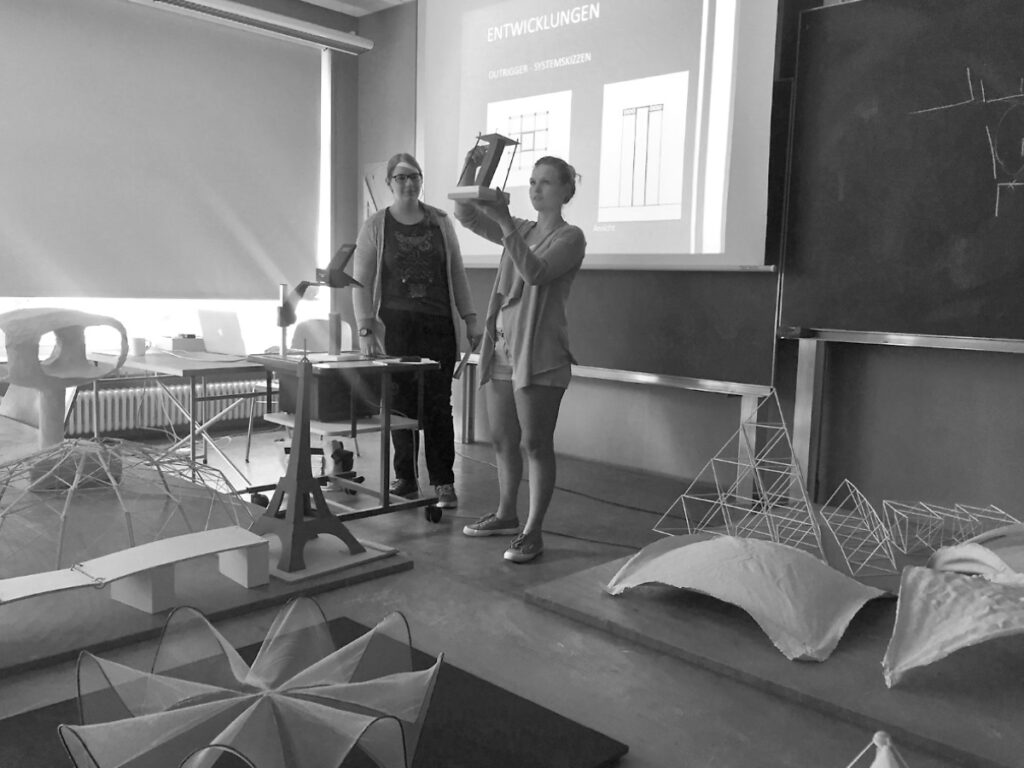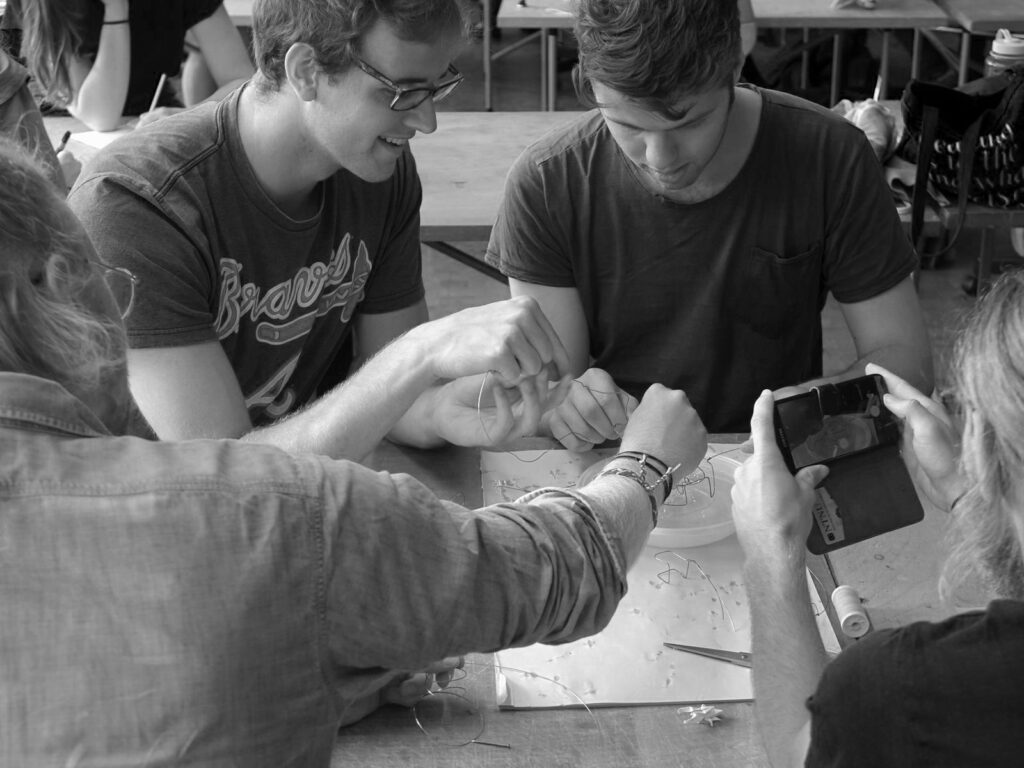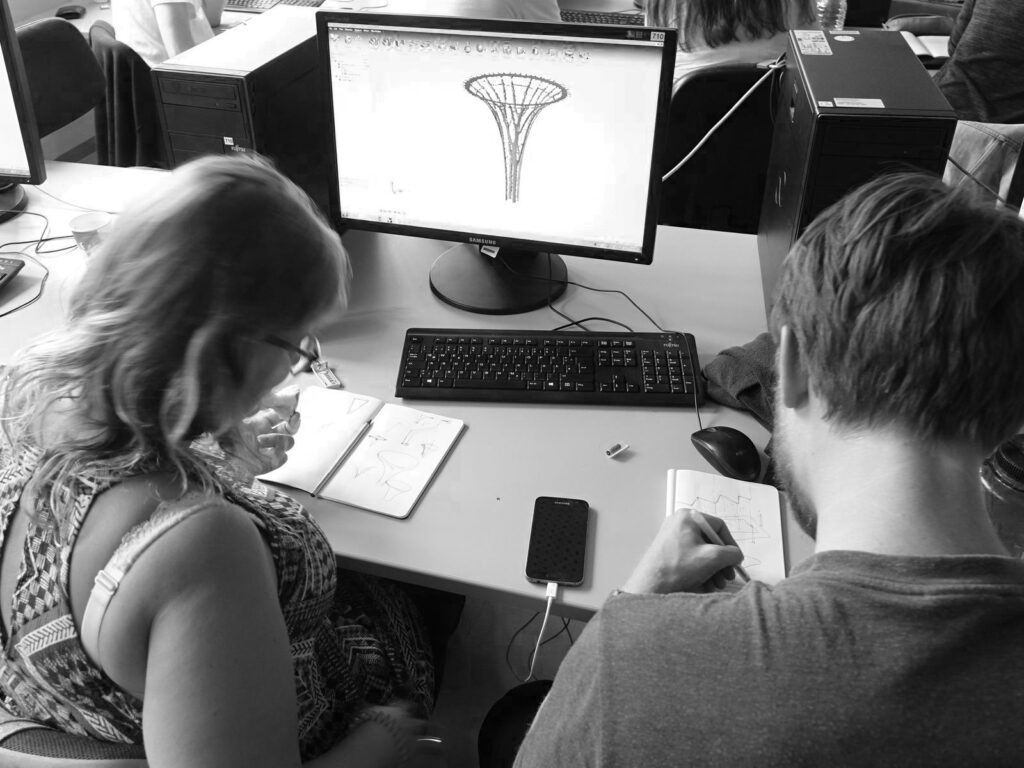Teaching
Teaching structural theory at a school of architecture is a permanent act of balance – dealing on the one hand with the action of gravity and its effects, which we cannot neglect, and on several other hands with the role of design of structures, the impact of structures on our lives and on our planet, and with the important role of communication and culture.
Learning by Explaining
Having passed the first semester of structural analysis, students are familiar with elementary terms of structural analysis: bending moment and stress, beam and slab, deformation and buckling. Inviting them to describe existing structures makes them reflect and find own wordings. The class covers a broad range of structural systems, ranging from additive systems of basic structural elements to formactive structures such as membranes and shells. Having them present their insights shows that this approach enhances their structural understanding.


Learning by Experimenting
Analog structural models are probably the most descriptive approach to understand the interaction of form and forces. During our workshops, we experiment with different kinds of models, including chains, cloth and soap films. Variations in loading conditions or geometrical constraints give an insight into the structural behaviour.

Learning with the use of digital tools
Digital tools have become an everyday application and in fact many applications are very descriptive to inform students of architecture about structural behaviour. Our workshops using topology optimization as a constitutive design tool have proved that dealing with structures – support conditions, loading conditions – with an interactive design tool results in good understanding as well as aesthetic design results.